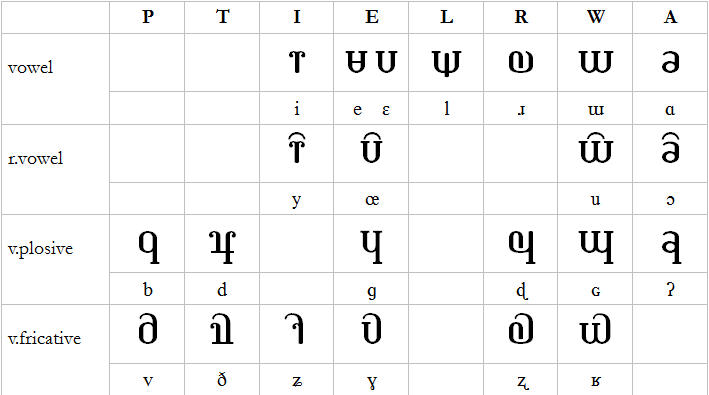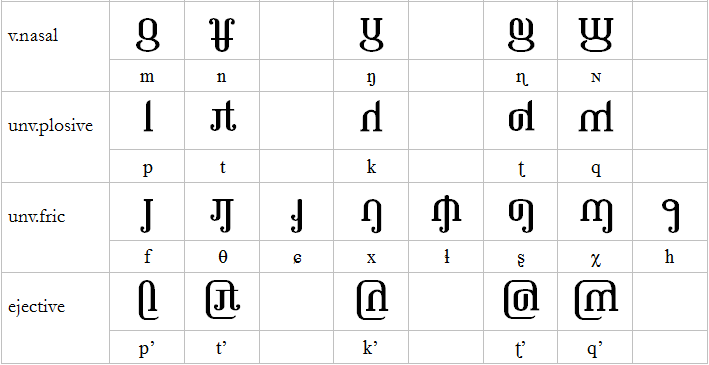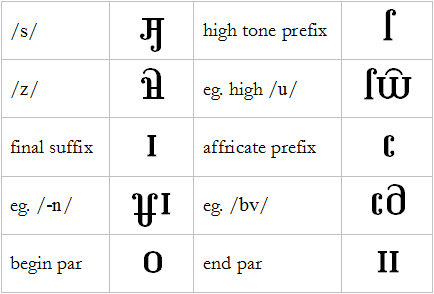This is a script modeled roughly on the component-based scripts of SIGIL. It is a simpler style of alphabet, easy to write, and still clear as to how the phonemic letters are derived from and related to each other. It has been given a whimsical name, the first of a series planned A-Z.
Main families
Except for the labial and dental consonants, phonemes can be derived from the vowel regions, as with version 33 etc of SIGIL. In all cases the glyphs are not assembled from individual sub-glyphs, but are made whole; this makes the encoding and printing very straight-forward.
Other symbols
As for /s/ and /z/, they are derived easily from the main dental fricatives. The begin-paragraph glyph is an ‘unformed /b/’, representing the mouth closed but ready with voicing. Likewise the end-paragraph glyph is a ‘final unformed /p/’, where the voicing is stopped.
Note that plosives sound an inherent schwa if not followed by an explicit vowel or final marker.
Sample texts
1. This is the beginning of Shakespeare’s sonnet 18 (transliteration), for comparison with versions of SIGIL.
“Shall I compare thee to a summer’s day?
Thou art more lovely and more temperate;
Rough winds do shake the darling buds of May,
And summer’s lease hath all too short a date.”
2. This is a transliteration of Article 1 of the Universal Declaration of Human Rights, using an italic font.
“All human beings are born free and equal
in dignity and rights. They are endowed
with conscience and reason and should act
towards one another in a spirit of brotherhood.”
A version of this page can also be found on Omniglot.






